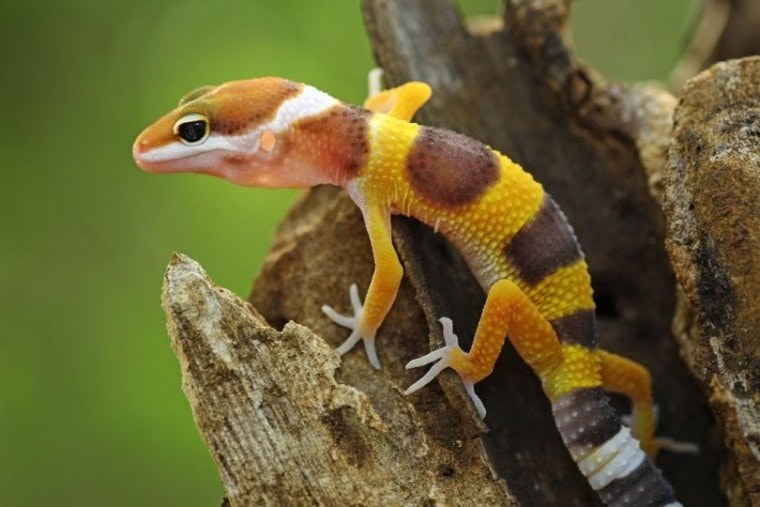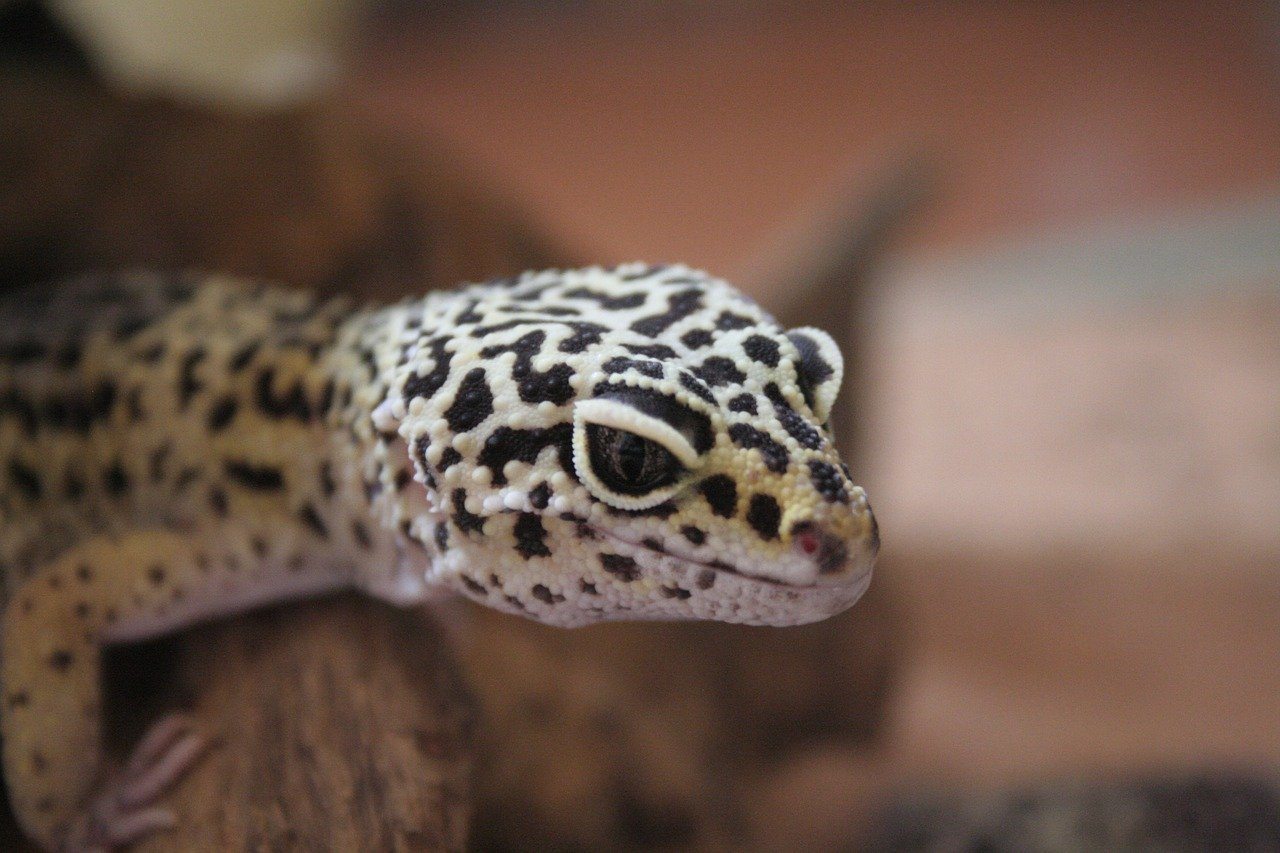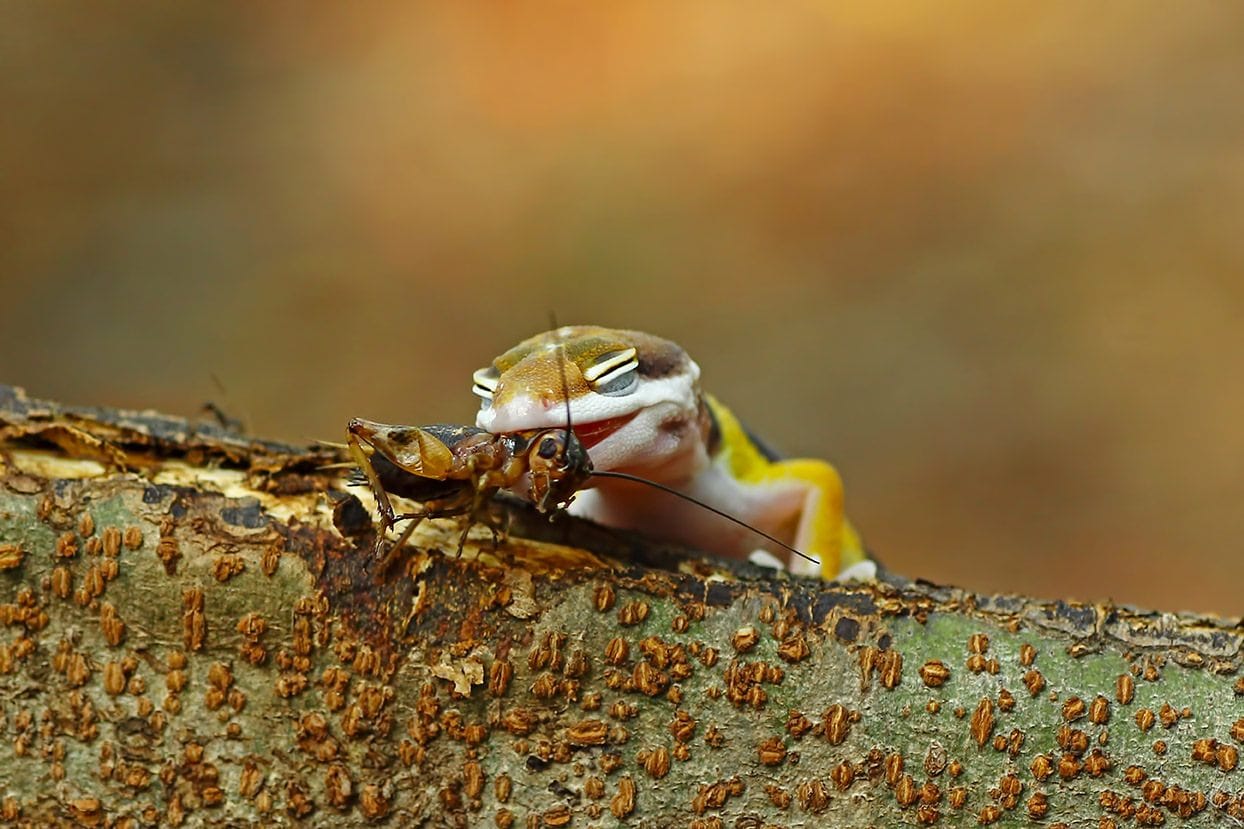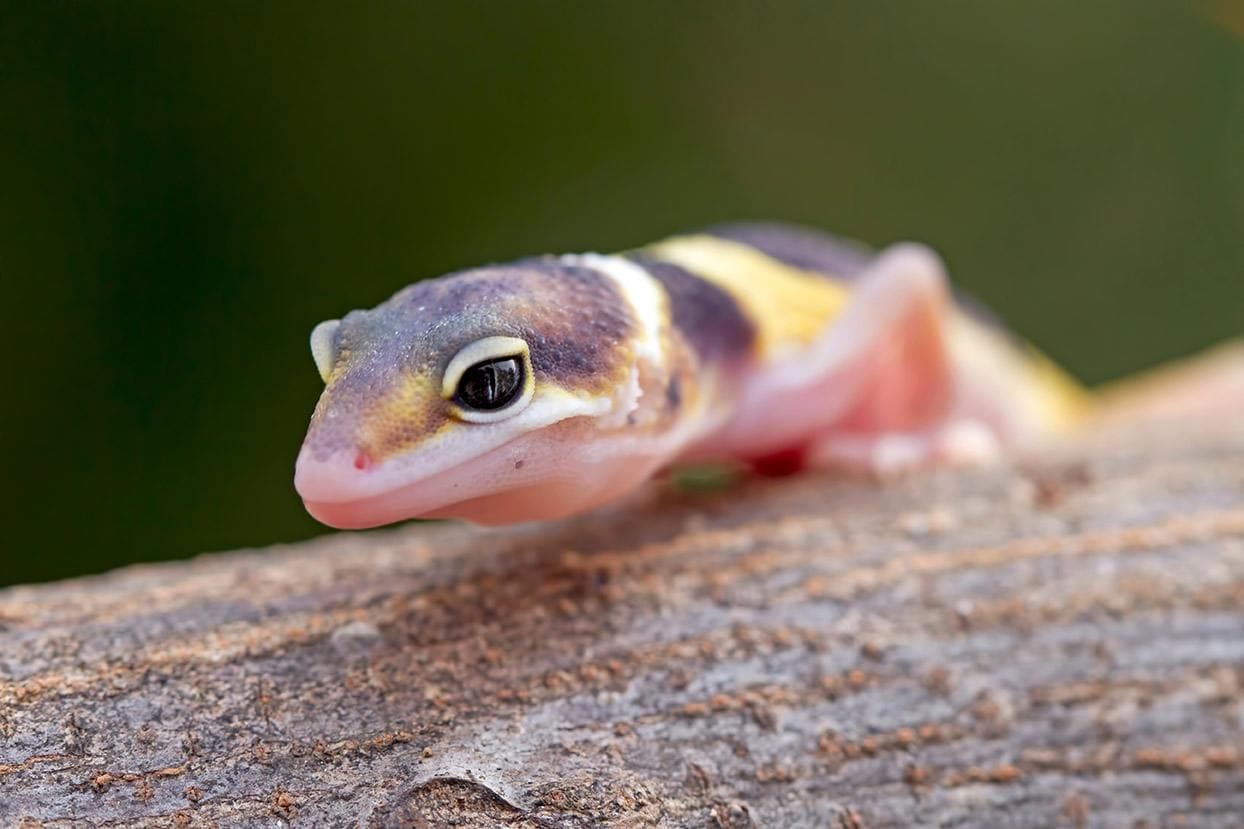
While some people love cuddly pets like cats and dogs, others need something less high-maintenance. Leopard Geckos are one of those oddly adorable pets that are much easier to take care of and for some people, just as rewarding.
If you have decided to adopt a baby Leopard Gecko for the first time, this is the guide for you. You might be a proud new owner or trying to glean as much knowledge as you can before you adopt one. Either way, we’ve got you covered with everything that you need to know about setting up your leopard gecko’s new home, how to feed them, and the quality time that they might need.
What Kind of Home Does My Baby Leopard Gecko Need?
A baby leopard gecko can have a small plastic terrarium to live in a smaller, less overwhelming space as they grow into their first few months. However, it isn’t necessary if you want them to move into their final home.
A leopard gecko should have a glass terrarium. If you only have one, you can have a 10-gallon glass tank. If you think that you will end up with more than one leopard gecko, though, you should go with a gallon tank from 15 to 20 gallons. It is wisest to only pair leopard geckos of approximately the same age, since some adults will eat baby geckos.
You need to fill the tank with the right substrate and habitat pieces so your gecko can have things to hide under and play around with. There are all kinds of substrates that work for leopard geckos, including reptile carpet, which stops them from digesting it when they try to catch their prey. You can also line the bottom of their enclosure with paper towels, tiles, or newspapers.

Avoid substrates like small pebbles and sand, even though this might be what’s around in their natural habitats. These can cause impaction if not appropriately handled.
Lighting and heating are the most important aspects of a leopard gecko’s enclosure. They need a strict temperature setting for them to live a happy, long life. You can provide the necessary heating and lighting using a heat lamp. Don’t forget to simulate day and night cycles of around 12 hours instead of leaving the light on all the time.
Generally, the air temperature in their cage should be between 77 and 85 degrees Fahrenheit. The hot side of your reptile’s tank should be around 85 to 94 degrees, and the cool side should be around 70 degrees Fahrenheit.
To keep your leopard gecko comfortable and give them their own time, you should put in tank accessories. These include things like hidey-holes and basking platforms. You can also add small, non-poisonous plants and other natural additions, like rocks.

What Should I Feed My Baby Leopard Gecko?
A leopard gecko enjoys a varied diet even as a baby. You can feed a baby leopard gecko essentially the same diet as an adult leopard gecko. They are happy to eat crickets and mealworms as staple foods. From there, you can vary their diet by supplementing super worms, wax worms, silkworms, and hornworms.
Beyond their typical diet, leopard geckos will also need a vitamin supplement after each meal that they consume. Giving them this is especially important for baby leopard geckos. Without it, they might not develop properly and won’t have a strong skeletal structure.
Calcium deficiency is the primary thing that you have to watch out for in your gecko’s diet. Supplement their food with calcium powder, and you shouldn’t have to worry about it.
How Do I Take Care of My Baby Leopard Gecko?
Baby leopard geckos should get a meal every day. They grow rapidly during their first 6 months. After their first year, you only need to feed them every other day.
A good rule of thumb for how much to feed them is to give them two insects per meal for each inch of their length. It’s best to do this later in the day because this is the time when they are the most active.
Beyond feeding, you also have to be aware that they will shed every 5 to 7 days after they hatch for the first month. After that, they will shed at least once every 1 to 2 weeks until they become adults.
You can tell that your baby leopard gecko will shed, as their colors will become quite dull. After that, the skin separates and turns white. Once it sheds, they won’t waste the nutrients in the skin and will eat it.
When it comes to handling your baby leopard gecko, you will want to wait at least 2 weeks before you begin taming and handling them. They need to get used to their new home first.
Wait to hold your baby gecko until they begin to eat. Take the initial handling in steps. Allow them to get used to you by putting your hand in their tank in the evening but not trying to touch them. Work up to letting them climb on your hands.

How Do I Know If My Baby Leopard Gecko Is Sick?
Although leopard geckos are hardy, they are more vulnerable when they are babies. Before you bring a baby leopard gecko into your home, you should educate yourself on how they might fall ill if not cared for properly.
Calcium deficiency is the most dangerous possibility for a baby leopard gecko. You should gut-load insects or dust them with vitamins and mineral supplements so your gecko can absorb everything that they need for proper development.
Another life-threatening disease that is common in baby geckos is gastrointestinal (GI) impaction. The lizards accidentally eat bits of sand when they hunt their insects. Gradually, that sand builds up in their GI tract until it becomes obstructed. Eventually, your pet will stop eating and will strain to pass stool.
Another disease for baby geckos is the retention of shedding skin. Instead of growing out of their skin, they get dehydrated and can’t shed their skin. This typically happens because of a lack of humidity. When they can’t shed their skin, they will quickly lose weight, stop eating, and eventually, die.
If you notice any of these symptoms, you should immediately take your gecko to the vet. Most of these can be reversed up to a certain point. If left for too long, your gecko could die, and the result can happen surprisingly fast.
Leopard Gecko Facts
Leopard geckos belong to the genus Eublepharidae. Unlike most geckos, these remarkable creatures have moveable eyelids, but they don’t have toe pads like other species. That means that a leopard gecko can’t climb up smooth surfaces.
Don’t be surprised if your leopard gecko frequently sheds their skin. It is a positive and natural thing for them to do. They shed their skin as a survival mechanism to stop their scent from being picked up by predators.
Leopard geckos are native to the dry, semi-desert areas throughout the Middle East in countries like Afghanistan, Iran, Iraq, and northern India. They are hardy reptiles and can live for more than 20 to 30 years when you care for them properly.
Leopard geckos are one of the few kinds of reptiles that like to be handled, especially if they have grown up around humans and with human contact. That, combined with their lifespan, means that you can have a cuddly, reptilian friend for most of your adult life.
That said, adopting a baby leopard gecko is quite a commitment. Be prepared for the long haul so you can give your gecko a good and stable life.

Are Leopard Geckos Good Pets?
Leopard geckos are considered babies for their first year of life. They develop quickly throughout this year. They can start breeding at around 12 months of age, but they shouldn’t yet for their continued health.
Leopard geckos are generally considered to be one of the best pets when it comes to adopting a reptile. They are easy to care for and cultivate a positive and gentle relationship.
Leopard geckos are typically quite docile and happy creatures. They also happen to be one of the prettiest geckos. The more you interact with them, the friendlier they will be as they age, yet they don’t require a vast amount of your time each day.
Where Can I Get a Baby Leopard Gecko?
You can buy leopard geckos from almost any pet store that sells reptiles. If you don’t have such a pet store close to you, you can also order them online or work with a smaller, local pet store to have them delivered.
You might also be able to find leopard geckos from a local breeder. Some people who have owned leopard geckos for a long time might casually breed them as well. It is worth googling in your area to see if anyone breeds them locally.

How Much Does It Cost to Own a Leopard Gecko?
The initial cost to adopt a baby leopard gecko will cost anywhere from $30 to $100. Their price typically depends on their morph, the color, and pattern base on their skin.
Besides adopting the leopard gecko themselves, you will also need to purchase a glass tank sized between 10 to 20 gallons. You can also use plastic terrariums for very young, newly hatched geckos. However, it is best to give them a large enclosure that they can grow into so they grow well.
You can get a new or used tank, which will significantly affect the price. They can vary from $10 to $200, depending on their quality and size.
You will also need to get a substrate for the bottom of their cage and a light that will maintain the heat of their environment. This will generally cost around $50 to $100. Finally, you will need to feed them a regular diet of insects that you can typically buy from any pet shop.
The leopard geckos diet is normally not that expensive, costing around $10 to $20 a week, particularly if you purchase in bulk.
Related Read:
- Why Is Your Leopard Gecko Not Eating? 9 Possible Solutions
- Why Is My Leopard Gecko Pale? 7 Vet Reviewed Reasons
Conclusion
Taking care of a baby leopard gecko involves a learning curve. However, once you figure it out, you will have many happy years with an adorable pet that enjoys spending plenty of time with you.
Featured Image Credit: agus fitriyanto suratno, Shutterstock








